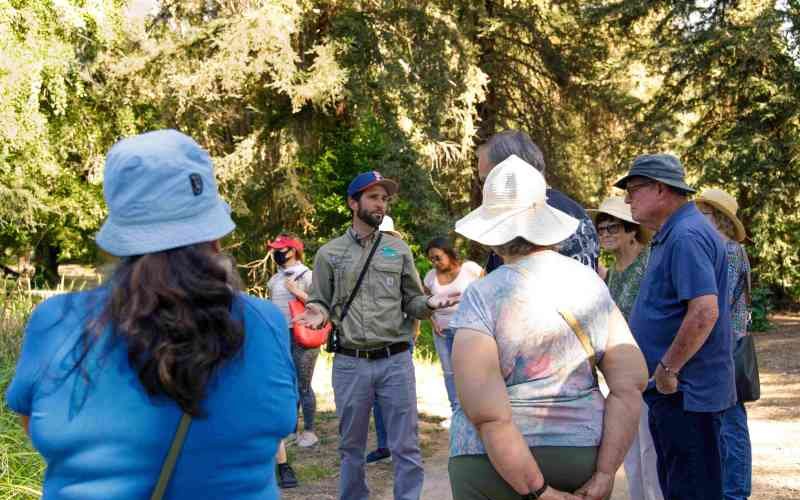
During the school year, the Arboretum and Botanical Garden at Cal State Fullerton hosts field trips for several K-5 elementary schools, so young students can learn about and better understand the natural world.
Last spring, 738 elementary students visited the Arboretum and Botanical Garden through these field trips. Guided by volunteers, they learned to appreciate the beauty of nature while also gaining a better understanding of the science behind the natural world. These field trip programs were created by Arboretum and Botanical Garden volunteers Susan McNamara and Debbie Williamson.
“Currently, we offer these guided tours to elementary students, all in the same grade level, because different age groups have different needs and interests,” said Justin Villasenor, academic and environmental program coordinator for the Arboretum and Botanical Garden. “Since the program is completely facilitated by arboretum volunteers, we want to make sure they are aware of the grade level in advance and can prepare accordingly.”
The focus of these tours is “investigating biomes.” Visitors learn more about areas with specific climates, vegetation and animal life. These regions are formed in response to the physical environment and regional climate. Zeroing in on the chaparral, desert and pond biomes, Villasenor said that most visiting students are excited by the pond biome as they get to see the most animals in and around the pond. These include red-eared slider turtles, ducks, small fish and, on occasion, the egret.
“Along the way, students learn about different ecosystems within the specific biomes,” said Villasenor. “We are currently developing a Trees Are Essential curriculum for the fall where students will explore near the pond, conifer trees and pepper trees.”
Scavenger hunts are also part of the fun. Throughout the Arboretum and Botanical Garden, there are several distinctive trees, plants and features. Students often look for the Bodhi tree, ombre tree, silk floss tree, giant quiver tree, kiwi/passion fruit tunnel, banana tree, bamboo and the outhouse, which is attached to the Heritage House that was built in the 1890s.
There is also a Fibonacci Sequence curriculum that may be of interest to older students. The Fibonacci Sequence is a series of numbers, starting with zero and one, that steadily increases where each number is equal to the sum of the preceding two numbers. In nature, this sequence is often found in seed heads, pinecones, fruits and vegetables.
If a child’s school doesn’t offer field trips, private groups of all ages are invited to take self-guided tours.
“Reach out to us if you’re interested in the self-guided tour option,” said Villasenor. “We can provide a general scavenger hunt activity for groups that will take them through most areas of the Arboretum and Botanical Garden, as well as the Fibonacci Sequence curriculum.”
To schedule a trip to the Arboretum and Botanical Garden or learn more about volunteer opportunities, visit the arboretum website.